![]()
Thursday, October 29, 2015 | By Dr. Raz Zimmt[1]
This study is originally published by The Meir Amit Intelligence and Terrorism Information Center. The study is structured in nine sections (see below), which if read in conjunction with each other, draws a complete picture of Major General Qasem Soleimani (Haj Qasem), commander of the Iranian Islamic Revolutionary Guards Corps’ Qods Force, instigator of Iranian Subversion and Terrorism in the Middle East and around the Globe.
Iranian support for the Houthi rebels in Yemen
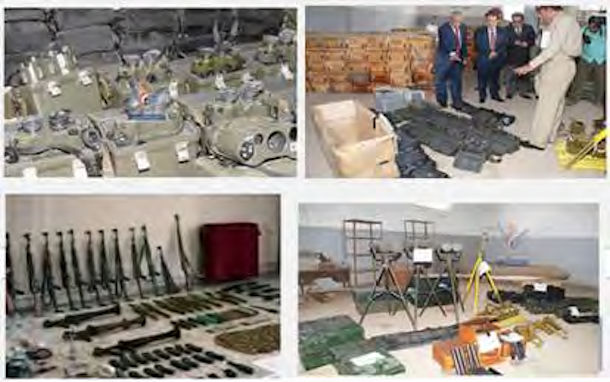
The weapons and military equipment found aboard the Jihan 1 (Sabanews.net, February 7, 2013; yemensaeed.com)
Iran regards Yemen as an important part of its regional policy of establishing an Iranian ground and naval presence at the entrance of the Red Sea. Its objective is to control the sea lanes leading from the Persian Gulf to the Middle East and Europe, and in that way increase its leverage and ability to pressure the West and its Arab allies. In addition, Iran regards Yemen, and especially the northern area along the border with Saudi Arabia, as a convenient arena for conducting subversion against Saudi Arabia, its main political and religious rival in the Middle East.
As in other countries, in Yemen Iran uses the Shi’ite population to promote its interests. In recent years Iran, with the Qods Force and its commander Qasem Soleimani, has given military support to the Houthi rebels, who belong to the Zaidi sect of Shi’a Islam. For example, on January 23, 2013, the Yemeni coast guard and security forces took control of the Jihan 1, a ship whose cargo included weapons, explosives and military equipment, some of it of Iranian manufacture. The ship was en route from Iran to the Houthi rebels in northern Yemen. On February 2, 2013, the Yemeni News Agency reported that according to the Yemeni government, when the ship was in port in Iran it was handed over to eight Yemeni crew members to sail to the shores of Yemen.
Ali Hassan al-Ahmadi, head of Yemeni National Security, accused Iran of being behind the smuggling attempt. He claimed such a shipment could not have been orchestrated by merchants or smugglers, only by a state (Agence France-Presse, February 9, 2013). According to American officials, the weapons seized were manufactured in Iran, and the way they were transported was similar to previous incidents of weapons smuggling from Iran to Yemen (The New York Times, January 28, 2013). However, despite Iran’s financial and military support for the Houthis in recent years, most of the rebels’ successes are apparently the result of the lack of governance in Yemen and the country’s political instability which led to the Houthi rebels’ alliance with the former Yemeni president, Ali Abdallah Saleh, and their access to Yemeni army arsenals.
Opportunities and challenges presented by developments in Yemen, 2015
The developments in Yemen in 2015 and the Houthis’ first military successes were considered proof of Iran’s rising regional status. They focused Arab and Western world attention on Iran’s intention to use the IRGC to strengthen its foothold in the Yemeni arena. In March 2015 the BBC in Arabic reported that Qasem Soleimani was en route to Yemen to arrange aid for the Houthis (the reliability of the report is doubtful, and it was denied by Iran).
The Houthis’ military and political successes made it necessary for Saudi Arabia to change its traditional policy of avoiding direct military involvement beyond its borders. In March 2015 the Saudis, heading an Arab coalition, initiated Operation Decisive Storm in Yemen, which included aerial attacks and whose objective was to repel the Houthis from the areas over which they had gained control. One of the reasons for the operation was Saudi and Arab concern that Shi’ites would control the Gulf of Aden and the Bab al-Mandeb Straits. The Iranian regime strongly condemned the Saudi attacks in Yemen and demanded that Saudi Arabia immediately stop its military activities in the country.
While the crisis in Yemen presented new opportunities for Iran to establish its regional influence, Iran was concerned with the Saudi campaign. That was mainly because of the situation in Iraq and Syria, which made it difficult for Iran to divert military and economic resources to Yemen. In March 2015 Iran signed an agreement with the new Yemeni government for increased cooperation. It included Iranian aid for developing the port of Al-Hudaydah, which controls the Bab al-Mandeb Straits, and launching 14 flights a week between the two countries (which would enable Iran to transfer weapons to the Houthi rebels). The embargo Saudi Arabia imposed on Yemen and the tight international oversight of the aid shipments sent from Iran to Yemen by sea limited, however, Tehran’s ability to support the Houthis.
Despite the limitations imposed on it, Iran has continued its efforts to transfer aid to the Houthi rebels. In the middle of May 2015 Iran sent a ship called Iran Shahed to Yemen with a cargo of 2,500 tons of food, water, medicines, tents and blankets, delivered after a significant delay while UN inspectors in Djibouti examined the ship’s contents. Iran decided to dispatch the ship after several failed attempts to send aid to Yemen by air (Defa Press, June 7, 2015). A second Iranian ship left for Yemen on June 6, 2015, setting sail from Port Khomeini in Khuzestan Province in southwestern Iran. The chairman of the province’s port association claimed that the Arezou (“wish”) was carrying 8,000 tones of rice and 1,000 tons of sugar (ISNA, June 7, 2015).
On September 26, 2015, the Arab coalition forces fighting in Yemen halted an Iranian ship found to be carrying weapons, apparently en route to the Houthi rebels. The ship, whose papers defined it as a “fishing vessel,” was halted in the Arab Sea near the shores of Oman. According to the Saudi-led Arab coalition, the vessel had been examined by Iranian customs officials and Tehran knew what its cargo contained. According to reports, there were 14 Iranians aboard, as well as large quantities of weapons, including shells, anti-tank missiles and other weapons systems.
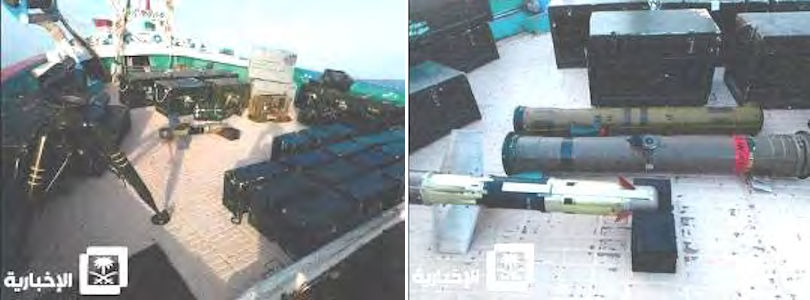
Pictures posted to a Twitter account taken from Yemeni TV, showing the weapons consigned to the Houthi rebels found aboard the Iranian ship halted by the Arab coalition forces.
The limitations on Iranian support for the Houthis were manifested again in recent months. Iranian attempts to aide the Houthis (which included the use of Hezbollah operatives, as well) did not prevent Yemenis loyal to the government in exile from retaking a number of important cities from the rebels, among them the key port city of Aden. Iranian involvement via the Qods Force is still far from over and it is difficult to estimate what success Iran will have in Yemen.
Reviewing the situation for the Assembly of Experts in September 2015, Qasem Soleimani described the developments in Yemen. He claimed that the Houthi rebels were supported by more than 50% of the Yemenis and that Saudi Arabia would never will the war in Yemen (Tasnim News, September 1, 2015). However, it is probable that most of Soleimani’s attention and effort are devoted to Iraq and Syria, and his ability to manage the crisis in Yemen is limited.
Other Arab States
During the past year some evidence was revealed for Qods Force involvement in subversion and terrorism in other Arab states. In July 2015 the Jordanian government reported it had detained an Iraqi working for the Qods Force who was suspected of planning to carry out a terrorist attack in Jordan. A month later the Bahraini police announced it had exposed a direct connection between Iran and Hezbollah to the terrorist attack carried out on July 28, 2015, in which an IED killed security force personnel. According to the announcement, five suspects had been detained on suspicion of involvement in the attack and had confessed that they had ties to the IRGC and Hezbollah.
The accusations made by Jordan and Bahrain, which were vigorously denied by Iran, did not relate to the direct involvement of Qasem Soleimani. A declaration attributed to Soleimani in March 2015, that Iran could control developments in Jordan as it did in Iraq and Lebanon, was also denied by the Iranian embassy in Jordan and an IRGC spokesman (Fars News, March 23, 2015).
![]()
You can find the introduction and other sections here:
- Introduction: Portrait of Qasem Soleimani, commander of the Iranian Islamic Revolutionary Guards Corps’ Qods Force
- Section 1: A short biography of Qasem Soleimani
- Section 2: Qasem Soleimani’s involvement in the Syrian civil war
- Section 3: Qasem Soleimani’s involvement in Iraq
- Section 4: Qasem Soleimani’s involvement in the Palestinian arena and Israel
- Section 5: Qasem Soleimani’s involvement in Lebanon
- Section 7: Qasem Soleimani’s involvement in internal Iranian politics
- Section 8: Qasem Soleimani’s public image
- Section 9: Possible lifting of international sanctions on Qasem Soleimani in the wake of the nuclear agreement
![]()
Notes:
[1] This study of Qasem Soleimani was written for the Intelligence and Terrorism Information Center (ITIC) by Dr. Raz Zimmt, a research fellow in the Alliance Center for Iranian Studies in Tel Aviv University and a research fellow at the Forum for Regional Thinking. His fields of expertise include the politics, society, foreign policy and social networks in the Islamic Republic. The study was coordinated with ITIC research fellows and includes information previously appearing in ITIC publications about the Qods Force.



 RSS
RSS

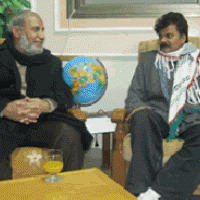
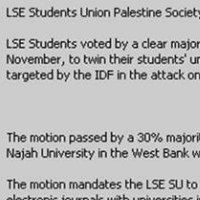
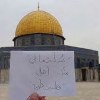
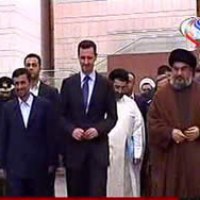
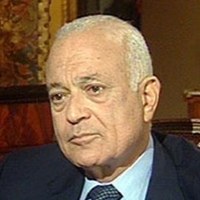




Latest Comments
Hello Mike, Thank you for your positive feedback to the article. I felt there wasn’t too much critical analysis of ...
Thanks for this considered and well constructed article. A follow up article on the manner in which the editorial contro...
THE CLUELESSNESS OF CLAIMING THAT OBAMA'S MIDDLE EAST POLICIES WERE A FAILURE CANNOT BE FURTHER FROM THE TRUTH, WHAT THE...
As long as Obama is the president of the usa do not trust the us government......
Thank you for an good read....